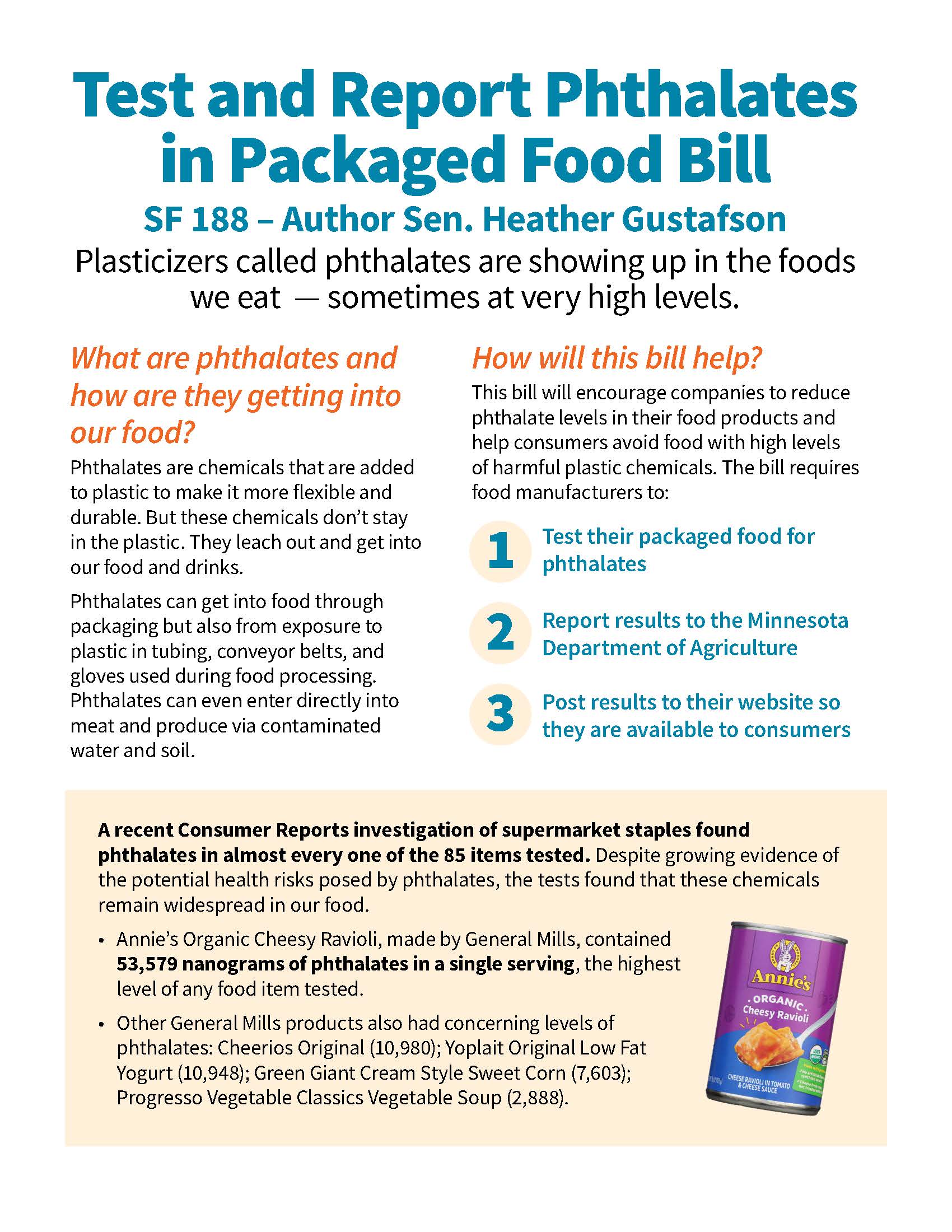What are phthalates, and how are they getting into our food?
Phthalates are chemicals that are added to plastic to make it more flexible and durable. But these chemicals don’t stay in the plastic. They leach out and get into our food and drinks. Phthalates can get into food through packaging but also from exposure to plastic in tubing, conveyor belts, and gloves used during food processing. Phthalates can even enter directly into meat and produce via contaminated water and soil.
How will this bill help?
This bill will encourage companies to reduce phthalate levels in their food products and help consumers avoid food with high levels of harmful plastic chemicals. The bill requires food manufacturers to:
- Test their packaged food for phthalates
- Report results to the Minnesota Department of Agriculture
- Post results to their website so they are available to consumers
A recent Consumer Reports investigation of supermarket staples found phthalates in almost every one of the 85 items tested. Despite growing evidence of the potential health risks posed by phthalates, the tests found that these chemicals remain widespread in our food. Annie’s Organic Cheesy Ravioli, made by General Mills, contained 53,579 nanograms of phthalates in a single serving, the highest level of any food item tested.
Other General Mills products also had concerning levels of phthalates:
Cheerios Original (10,980)
Yoplait Original Low Fat Yogurt (10,948)
Green Giant Cream Style Sweet Corn (7,603)
Progresso Vegetable Classics Vegetable Soup (2,888)
Why should we be concerned about phthalates?
A growing body of research has shown that plasticizers are endocrine disruptors. Even minor disruptions in hormone levels can contribute to an increased risk of several health problems.
Human exposure to EDCs is particularly concerning during vulnerable periods of life, such as pregnancy.
Growing concerns about the health risks posed by phthalates have led U.S. regulators to meaningfully curtail the use of these chemicals in several products, but not yet food.
There are no substantive limits on plastic-related chemicals in food packaging and production.
The serious health risks posed by phthalates are particularly concerning for children, who are at greater risk as their bodies are still developing.
Dr. Zeke J. McKinney
Occupational and Environmental Medicine Physician
Faculty in the University of Minnesota School of Public Health
